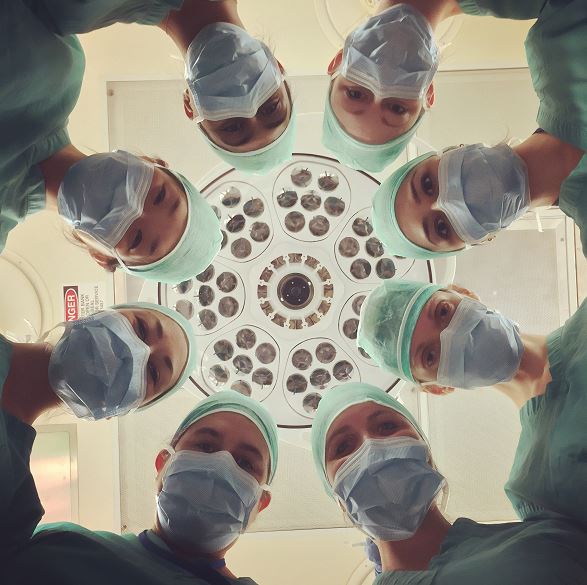
@ShahidNShah


Reconstructive surgery has seen remarkable advancements in recent years, thanks to the integration of cutting-edge technology. In the past, surgeons faced limitations in precision, longer operating times, and higher risks of complications.
Today, modern tools and techniques are transforming the field, making procedures safer, faster, and more accurate. Patients in West Palm Beach, FL, and beyond now have access to innovations that enhance both functional and cosmetic outcomes.
From ENT procedures to craniofacial and maxillofacial reconstructions, technology is reshaping how surgeries are planned, executed, and recovered from.
In this article, we explore the key technological developments driving these improvements and how they benefit patients across multiple reconstructive applications.
One of the most impactful advancements in reconstructive surgery is 3D imaging. These tools allow surgeons to visualize complex anatomy in precise detail before entering the operating room, creating a virtual roadmap for the procedure. This technology is widely used across many types of reconstructive surgeries, including craniofacial reconstructions, maxillofacial repairs, nasal and ear reconstructions, and even post-trauma facial restoration.
For example, in reconstructive ENT procedures, 3D imaging helps map delicate nasal structures and sinus anatomy, allowing for more precise correction and alignment. Patients often consult an ENT specialist in West Palm Beach, FL, who leverages this technology to improve surgical accuracy and ensure better functional and aesthetic outcomes. Trusted centers, such as AQ Surgey, have upgraded to these advanced technologies to ensure they provide the best results to their patients.
Beyond ENT, 3D imaging plays a critical role in:
This preoperative planning reduces surprises during surgery and helps achieve results that are both aesthetically pleasing and medically sound.
Robotic systems have brought unprecedented precision to reconstructive procedures. By translating a surgeon’s hand movements into smaller, more controlled motions, these tools allow access to tight or delicate areas without causing unnecessary tissue damage.
Applications extend beyond ENT, including:
Patients benefit from less scarring, faster healing, and improved long-term outcomes thanks to these technological improvements.
Another significant advancement in reconstructive surgery is the use of advanced biomaterials combined with 3D printing to create patient-specific implants. These technologies allow surgeons to design scaffolds, grafts, and implants that are precisely tailored to a patient’s unique anatomy.
Applications are wide-ranging and include ear reconstruction using custom auricular implants, nasal septum repair, cranial bone graft scaffolds, and facial bone reconstruction following trauma or tumor removal. By using patient-specific designs, surgeons can achieve outcomes that are both structurally sound and aesthetically natural.
3D-printed implants enable highly accurate reconstructions that were previously challenging or impossible, improving not only functional restoration but also the overall appearance, giving patients confidence in both recovery and long-term results.
Intraoperative navigation tools have also become standard in complex reconstructions. These systems track surgical instruments in real-time, providing guidance and accuracy during delicate procedures.
Use cases include:
By providing surgeons with continuous feedback, these tools ensure critical structures are preserved and outcomes are more predictable.
Modern technology now extends far beyond the operating room and plays a critical role in post-operative care. Wearable devices and remote monitoring systems allow for continuous observation of vital signs, helping detect potential complications early and improving patient safety.
These tools are used in a variety of reconstructive procedures, from facial trauma repair to complex craniofacial and ENT surgeries. Patients can benefit from telehealth check-ins, which enable surgeons to track healing progress and address concerns in real time without requiring frequent hospital visits.
These tools empower patients and surgeons to manage recovery proactively, improving overall satisfaction and safety.
Technological advancements—from 3D imaging and robotic-assisted surgery to advanced biomaterials and intraoperative navigation—have revolutionized reconstructive surgery. Consulting qualified reconstructive surgeons ensures that patients fully benefit from these innovations.
Modern reconstructive procedures are safer, more precise, and tailored to individual anatomy, improving both function and appearance. These improvements not only restore physical structures but also enhance confidence, well-being, and quality of life, making recovery smoother and outcomes more predictable for patients across multiple reconstructive fields.

In today’s fast-paced healthcare environment, managing revenue effectively is crucial for the success of any practice. Efficient Revenue Cycle Management (RCM)isn’t just about submitting claims and …
Posted Sep 26, 2025 Coding / Billing And Claims Revenue Cycle Management
Connecting innovation decision makers to authoritative information, institutions, people and insights.
Medigy accurately delivers healthcare and technology information, news and insight from around the world.
Medigy surfaces the world's best crowdsourced health tech offerings with social interactions and peer reviews.
© 2025 Netspective Foundation, Inc. All Rights Reserved.
Built on Dec 5, 2025 at 1:29pm